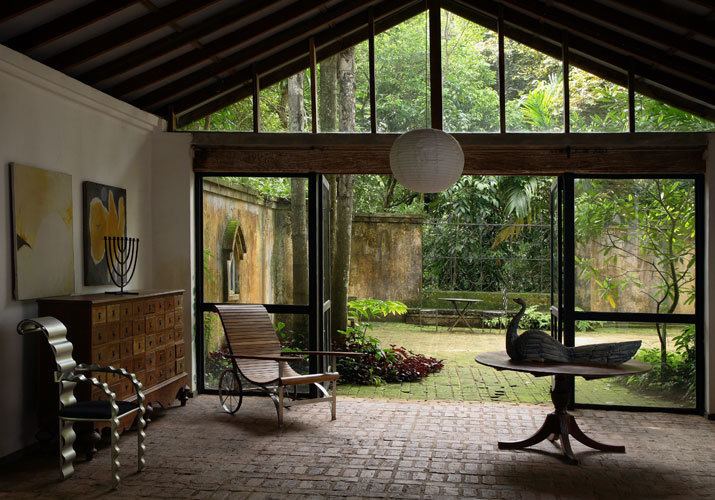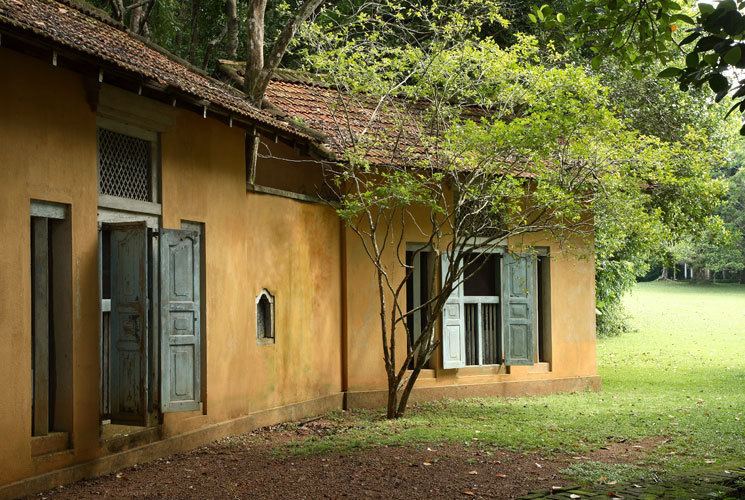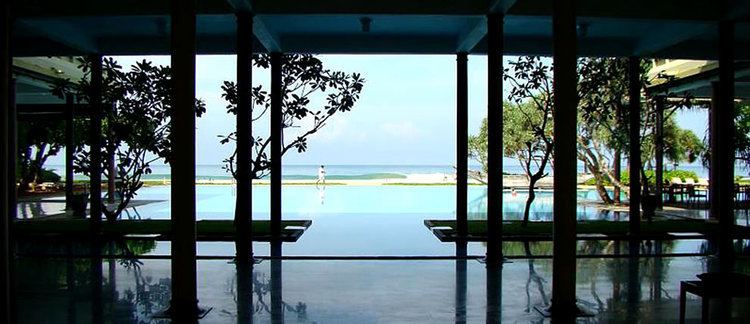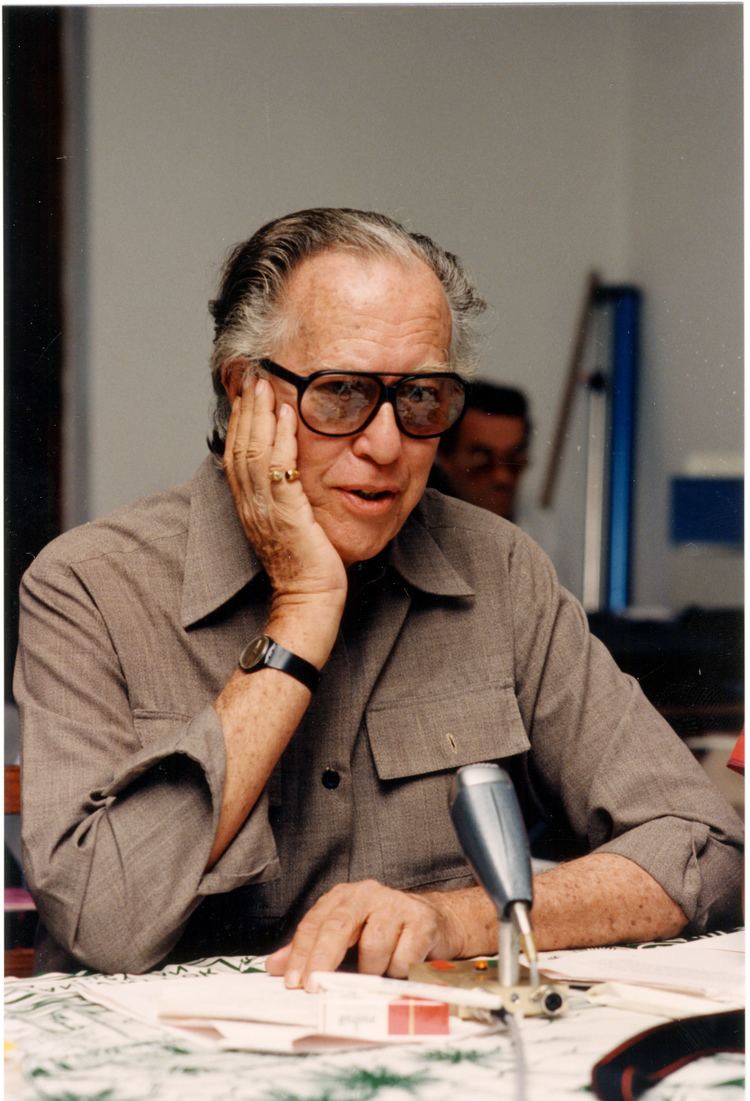Occupation Architect | Name Geoffrey Bawa Role Architect | |
 | ||
Practice Edwards, Reid and BeggGeoffrey Bawa Associates Died May 27, 2003, Colombo, Sri Lanka Books Bawa: Genius of the Place : an Architect of Sri Lanka Awards Aga Khan Award for Architecture, Deshamanya | ||
Geoffrey bawa the most influential sri lankan architect of his generation
Deshamanya Geoffrey Manning Bawa, FRIBA (23 July 1919 – 27 May 2003) was a Sri Lankan architect. He is the most renowned architect in Sri Lanka and was among the most influential Asian architects of his generation. He is the principal force behind what is today known globally as "tropical modernism".
Contents
- Geoffrey bawa the most influential sri lankan architect of his generation
- Geoffrey bawa memorial lecture 2010
- Early life
- Education
- Career in architecture
- List of works
- Awards and fellowships
- References

Geoffrey bawa memorial lecture 2010
Early life

Geoffrey Bawa was born on 23 July 1919. His father was Justice B. W. Bawa a wealthy and successful lawyer, of Muslim and English parentage, and his mother, Bertha Marianne Schrader, was of mixed German, Scottish and Sinhalese descent. He had one older brother Bevis Bawa who became a renowned landscape architect.
Education

He was educated at Royal College, Colombo after which he studied English and Law, 1938, at St Catharine's College, Cambridge gaining a BA (English Literature Tripos) and went on to study law at Middle Temple, London becoming a Barrister in 1944. Returning to Ceylon, after World War II, he worked for a Colombo law firm. After the death of his mother, he left the profession and soon left in 1946 to travel for two years, going to the Far East, across the United States, and finally to Europe and almost settling in Italy. By the time he was 28 years old, he had spent a third of his life away from Sri Lanka. During his time in Italy, he planned to buy a villa and settle down, but that did not happen, and by 1948 he had returned to Sri Lanka. Bawa bought an abandoned rubber estate on the south-west coast of the island between Colombo and Galle at Lunuganga, planning to create an Italian garden from a tropical wilderness. However, he soon found that his ideas were compromised by his lack of technical knowledge. In 1951, he was apprenticed to H.H. Reid, the sole surviving partner of the Colombo architectural practice Edwards, Reid and Begg. In 1952 Reid died, but Bawa still aspired to a career in architecture, so he returned to England, after spending a year at Cambridge, he enrolled as a student at the Architectural Association in London. To this day he is remembered as the tallest, oldest, and most outspoken student of his generation at AA. In 1957, at the age of 38 he returned to Sri Lanka qualified as an architect to take over what was left of Reid's practice.
Career in architecture

In 1951, he became apprenticed to the architectural practice of Edwards Reid and Begg in Colombo under its surviving partner, Reid. After Reid's death in 1952, Bawa left for England where he enrolled as a student at the Architectural Association School of Architecture. There he gained a Diploma in Architecture by 1956 and in the following year he became an Associate of the Royal Institute of British Architects whereupon he returned to Ceylon, becoming a partner of Messrs. Edwards, Reid and Begg, Colombo in 1958. In 1959, Danish architect Ulrik Plesner joined the firm, and the two designed many buildings together in their distinct style, sometimes called "tropical modernism."

Geoffrey and his brother Bevis were part of a milieu of sophisticated homosexuals who were drawn to the idea of Ceylon as a place of beauty, sensuality and escape. Like the Count de Mauny (Maurice Talvande) at Taprobane Island, the impetus for much of their work was the desire to create private arcadias within it. Bawa's architecture is at one with the land: inside and outside blend seamlessly, and it is designed for the maximum pleasure of its inhabitants. He was influenced by colonial and traditional Ceylonese architecture, and the role of water in it, but rejected both the idea of regionalism and the imposition of preconceived forms onto a site.
Plesner left the island in 1967. Bawa became an Associate of the Sri Lanka Institute of Architects in 1960. An ensuing close association with a coterie of like-minded artists and designers, including Ena de Silva, Barbara Sansoni and Laki Senanayake, produced a new awareness of indigenous materials and crafts, leading to a post-colonial renaissance of culture.
List of works
Geoffrey Bawa's work range mainly in Sri Lanka, however he has worked in several other countries as well: nine times in India, three times in Indonesia, twice in Mauritius and once in Japan, Pakistan, Fiji, Egypt and Singapore. His works include houses, hotels, schools, clubs, offices and government buildings, most notably the Sri Lankan Parliament Building.
